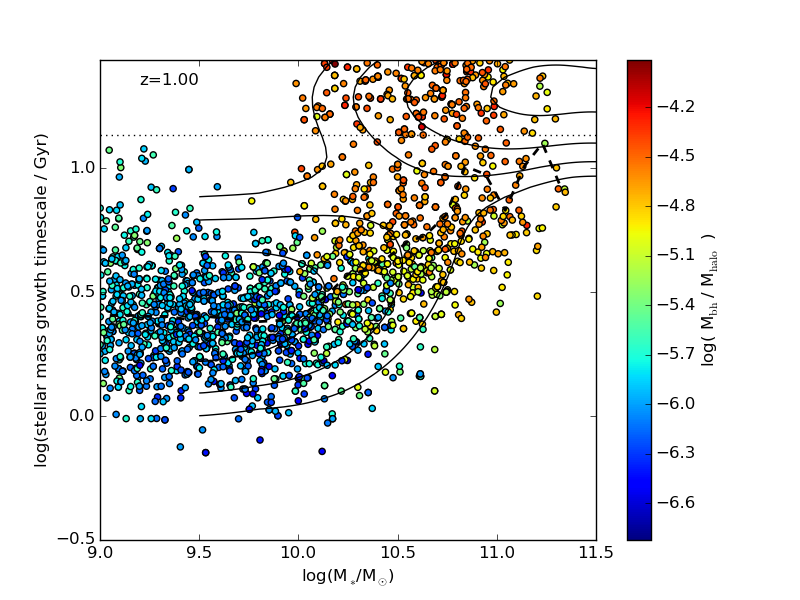The dark nemesis of galaxy formation: why hot haloes trigger black hole growth and bring star formation to an end
I’ve just submitted a new paper to MNRAS, the professional journal of astronomy… its all about black holes and how they bring star formation in galaxies to an end, creating two distinct galaxy types and making the Universe look the way it is. Far from being exotic predictions of Einsteins General Relativity, it seems that black holes play a fundamental role in shaping the observable universe.

Here’s the paper’s abstract, click to get a link to the paper…
Galaxies fall into two clearly distinct types: `blue-sequence’ galaxies that
are rapidly forming young stars, and `red-sequence’ galaxies in which star
formation has almost completely ceased. Most galaxies more massive than 3×10^10 Mo follow the red-sequence while less massive central
galaxies lie on the blue sequence. We show that these sequences are created by
a competition between star formation-driven outflows and gas accretion on to
the supermassive black hole at the galaxy’s center. We develop a simple
analytic model for this interaction. In galaxies less massive than
3×10^10 Mo, young stars and supernovae drive a buoyant outflow
that balances the rate of gas inflow. This prevents high gas densities building
up in the central regions. More massive galaxies, however, are surrounded by a
hot corona. We argue that above a halo mass of ~10^12 Mo, the
supernova-driven outflow is no longer buoyant and star formation is unable to
prevent the build up of gas in the central regions. This triggers a strongly
non-linear response from the black hole. Its accretion rate rises rapidly,
heating the galaxy’s corona, disrupting the incoming supply of cool gas and
starving the galaxy of the fuel for star formation. The host galaxy makes a
transition to the red sequence, and further growth predominantly occurs through
galaxy mergers. We show that the analytic model provides a good description of
galaxy evolution in the EAGLE hydrodynamic simulations, and demonstrate that,
so long as star formation-driven outflows are present, the transition mass
scale is almost independent of subgrid parameter choice. The transition mass
disappears entirely, however, if star formation driven outflows are absent.
